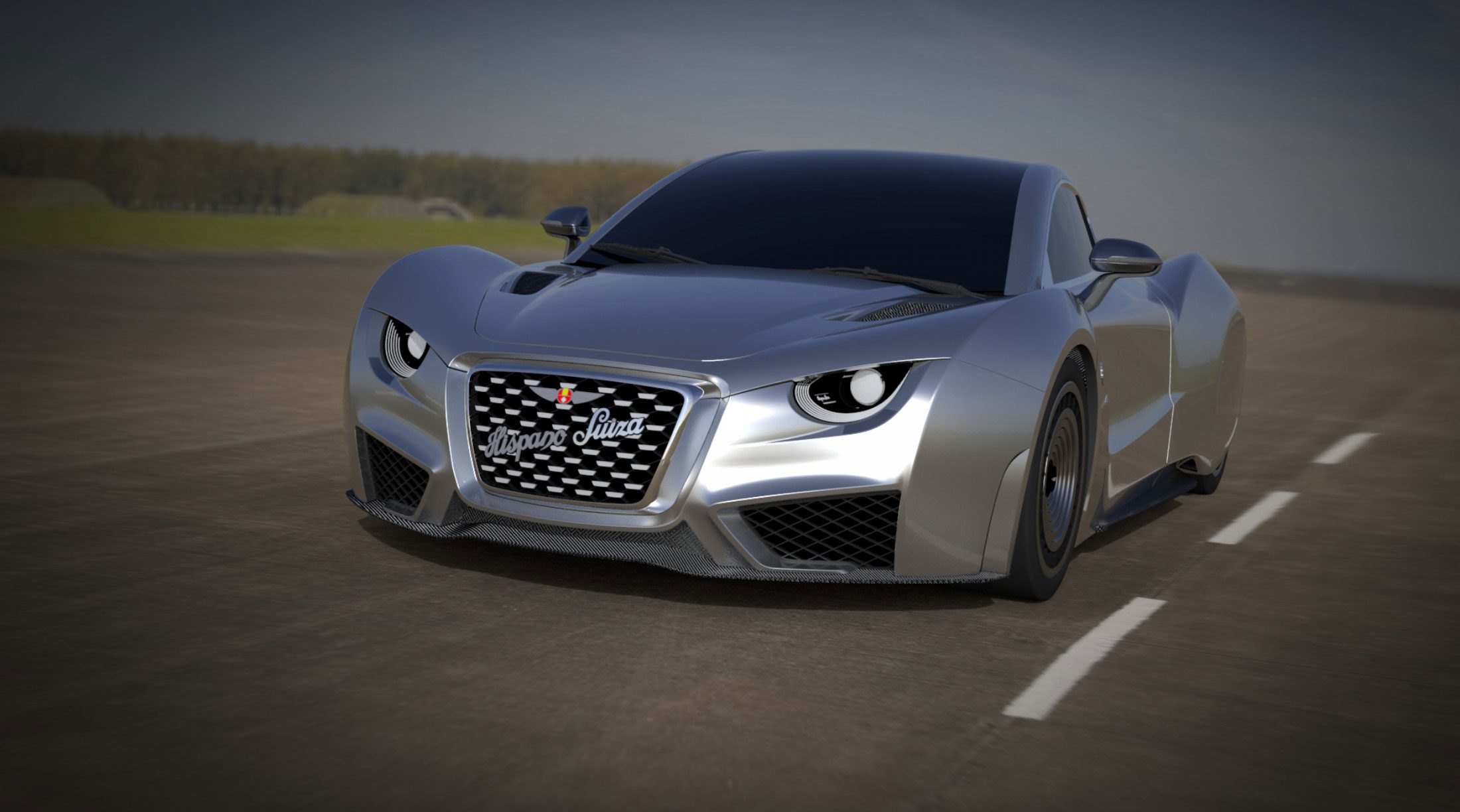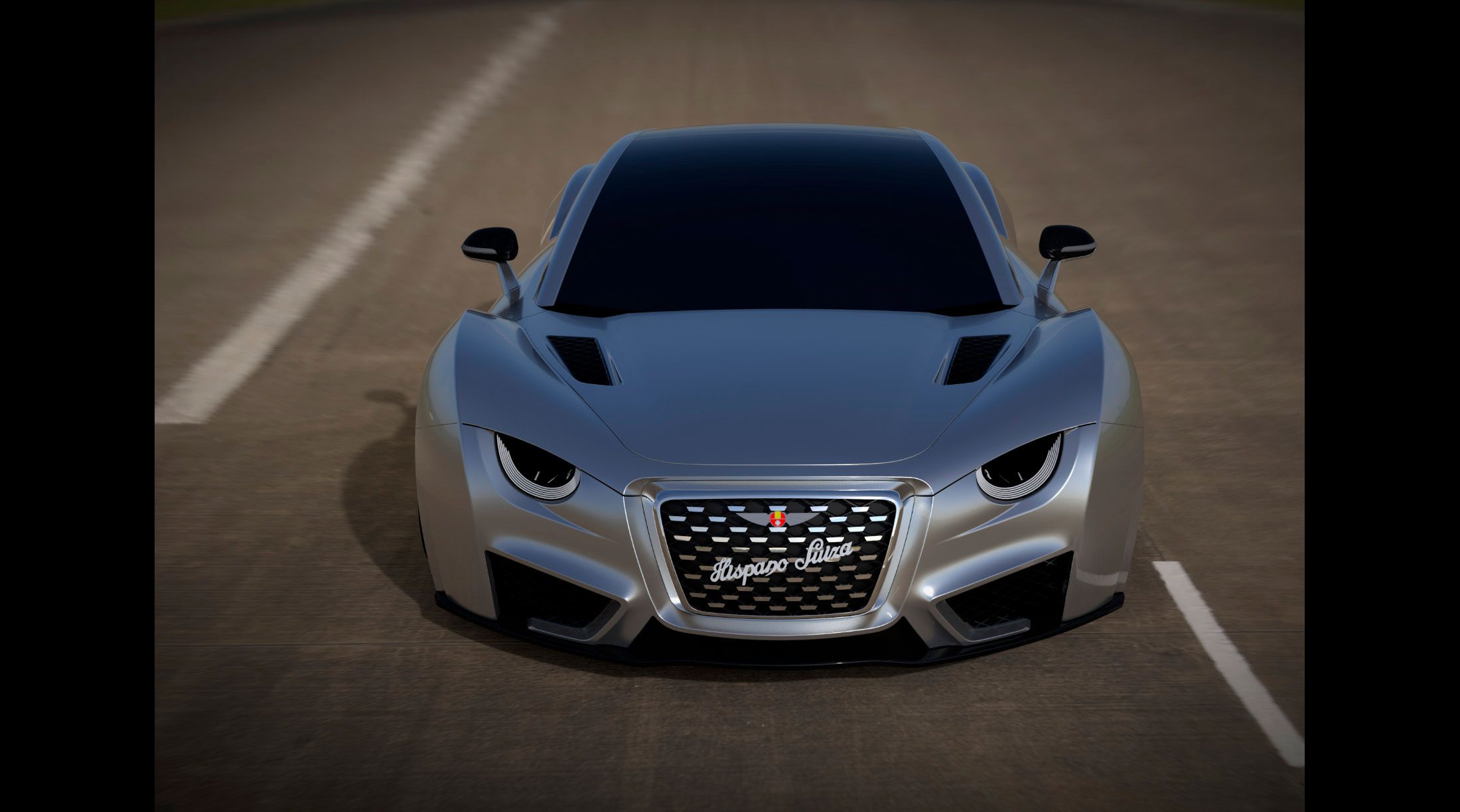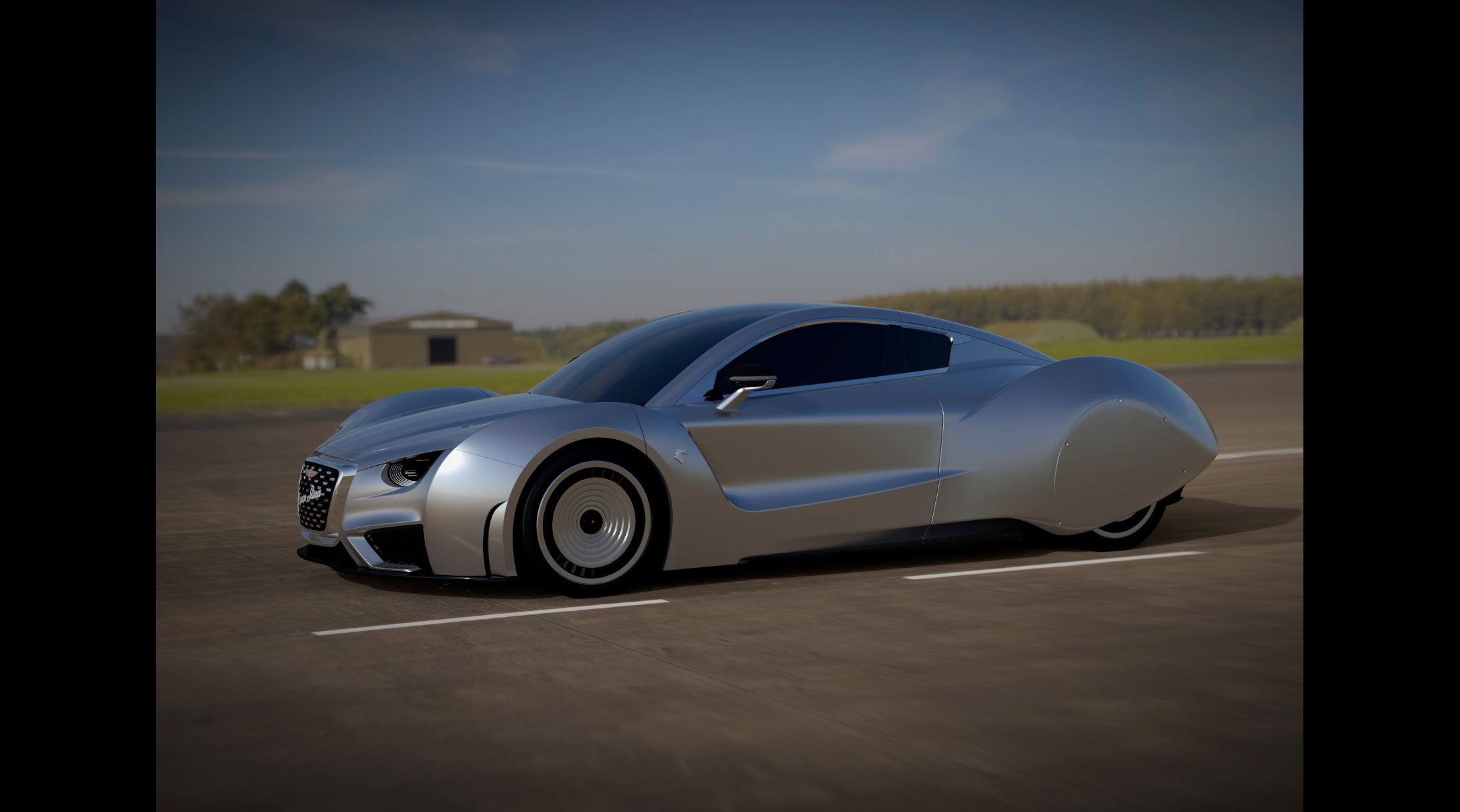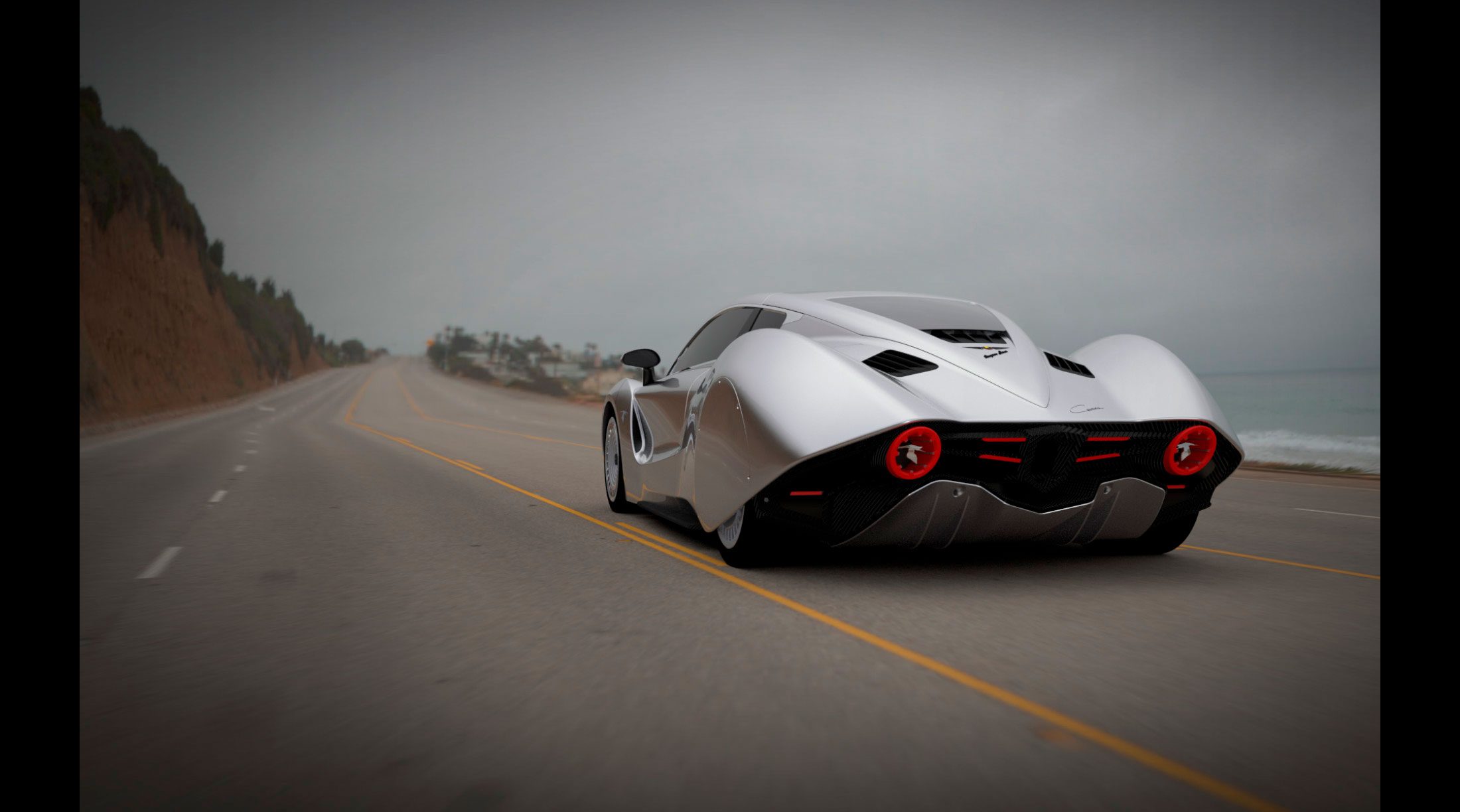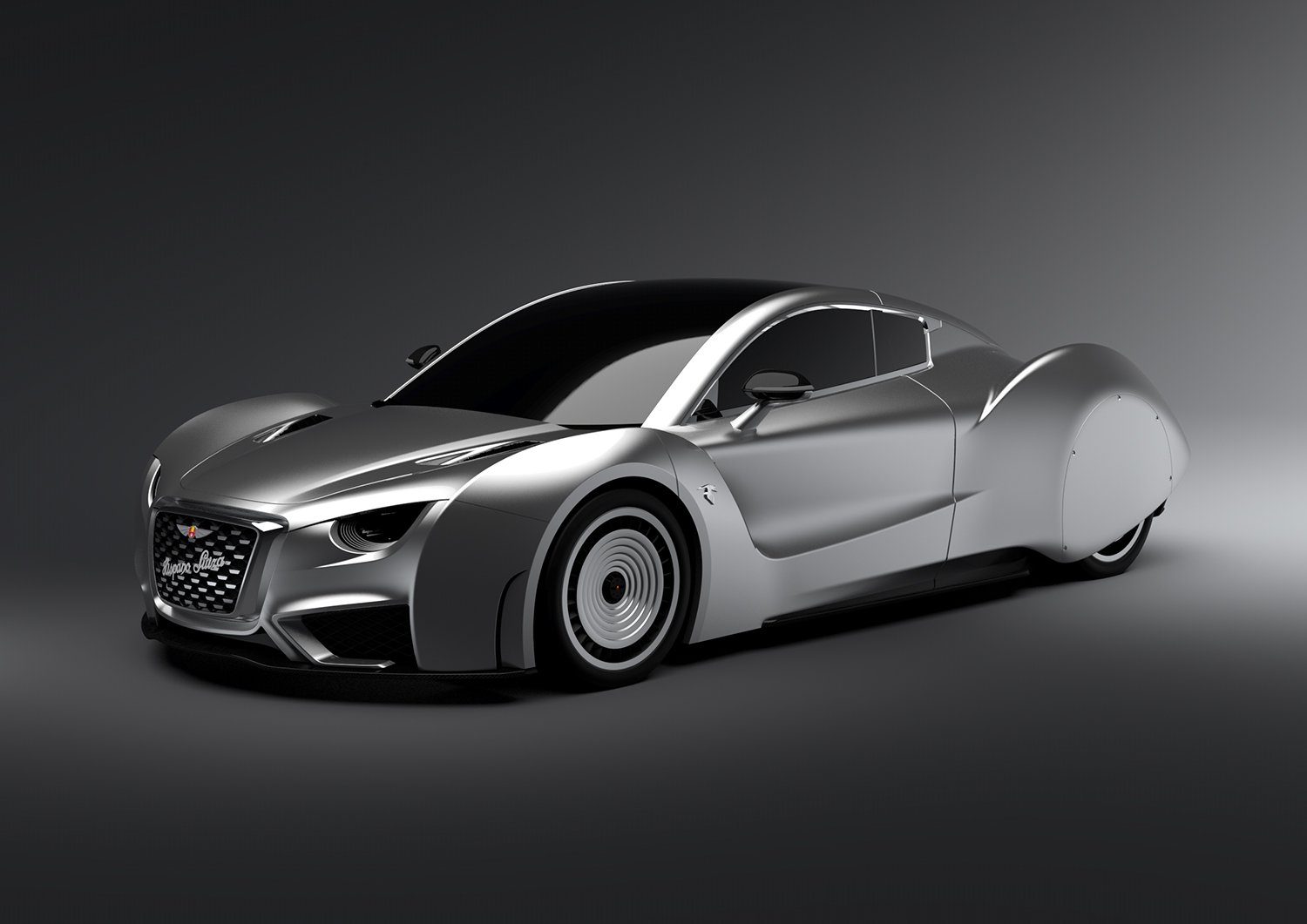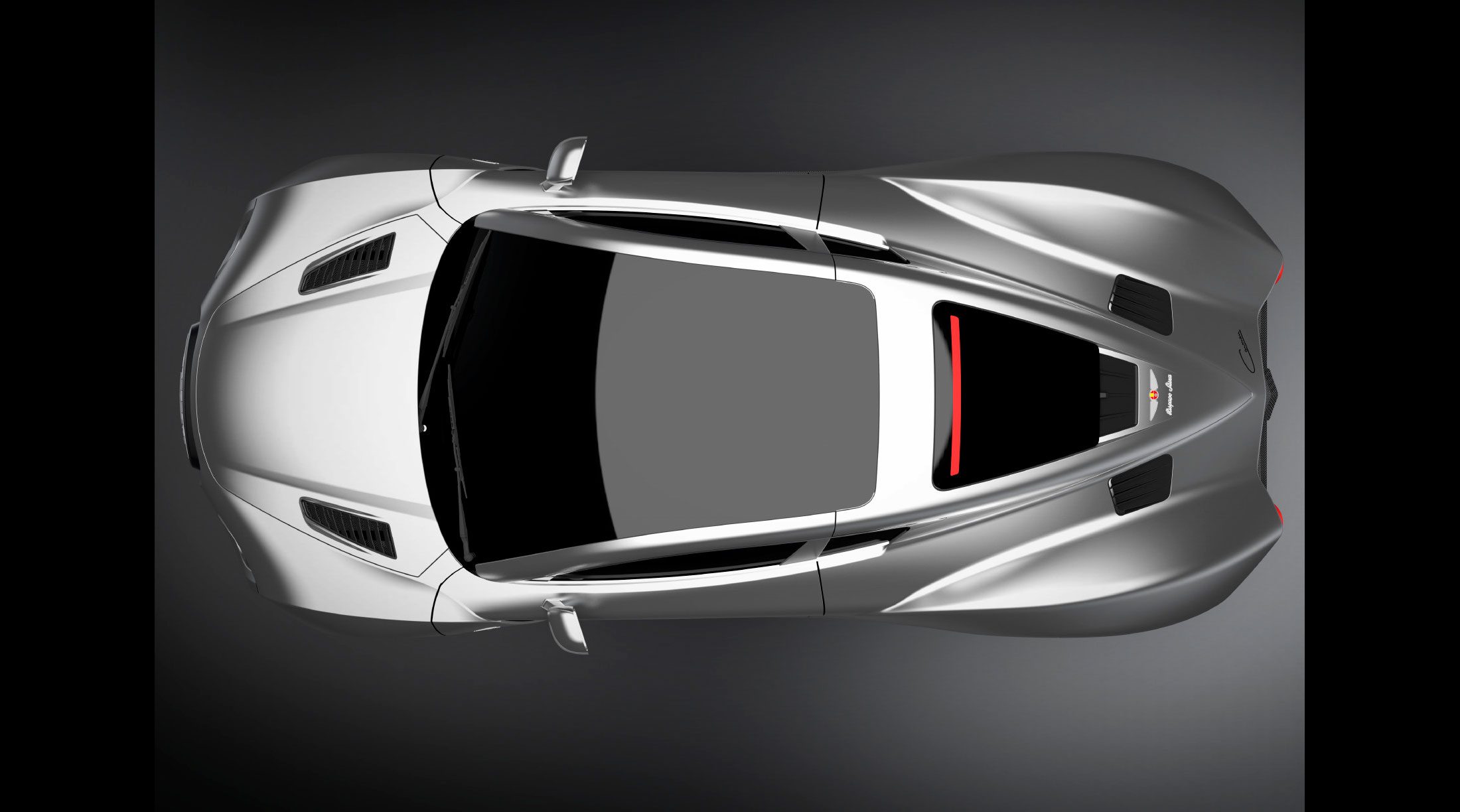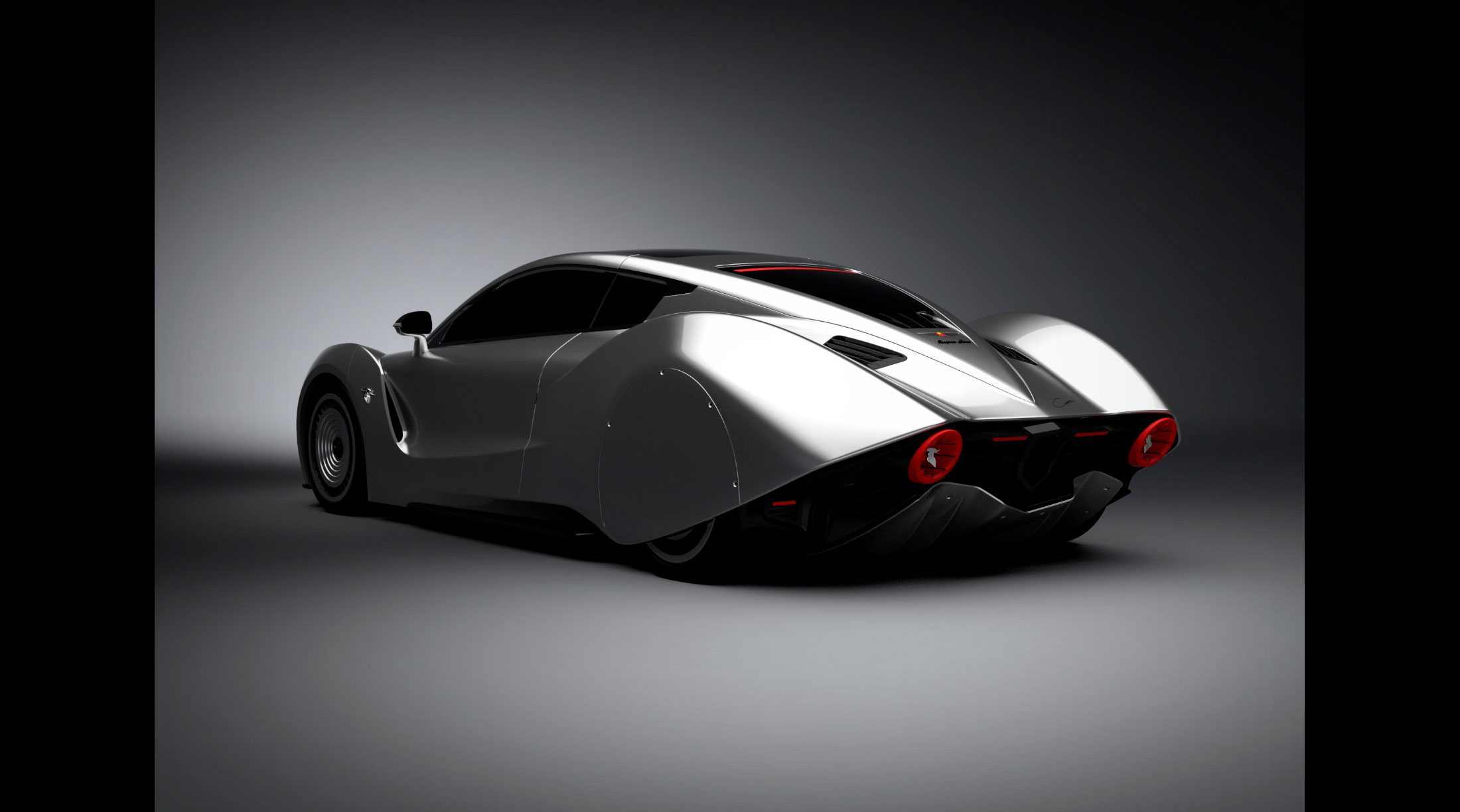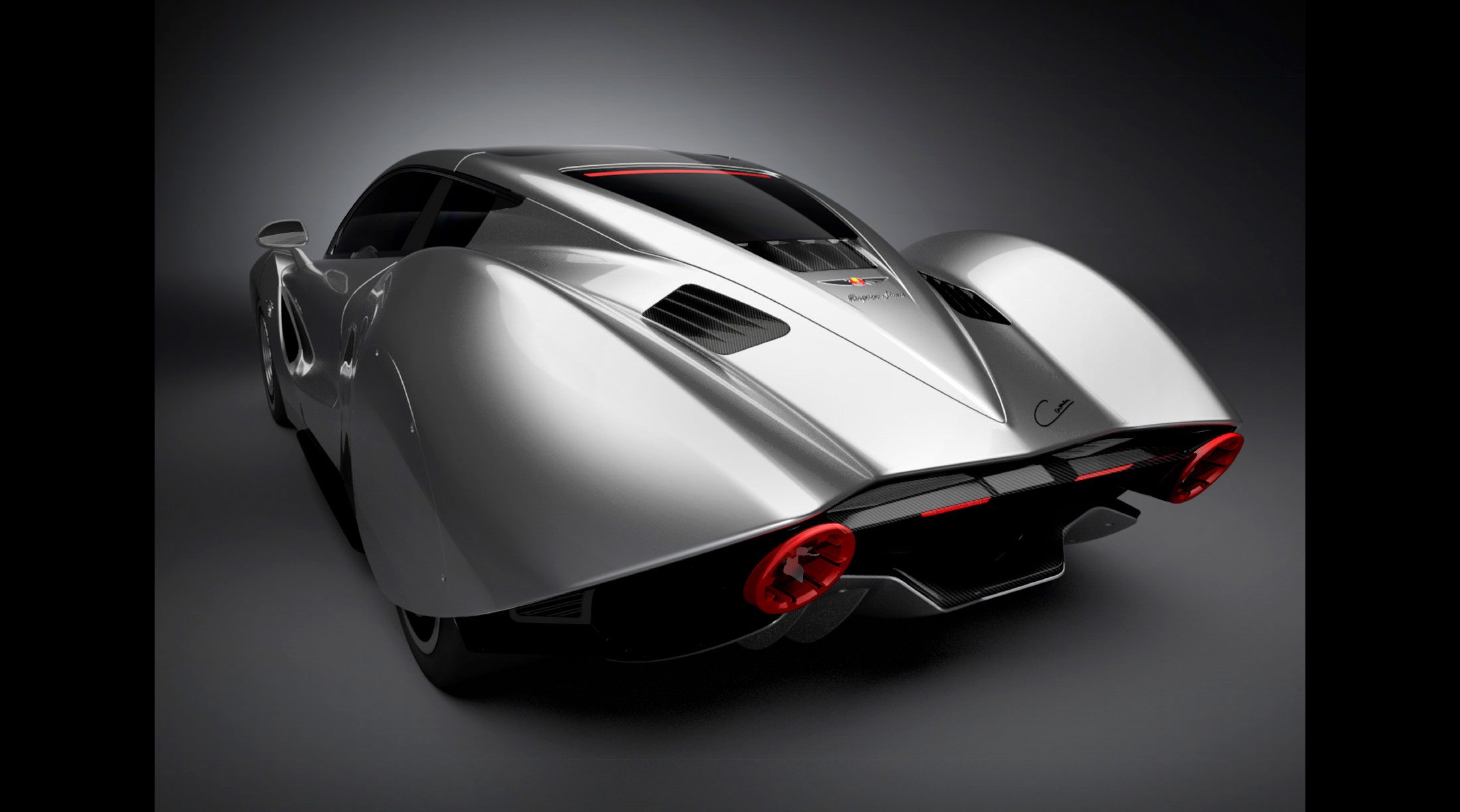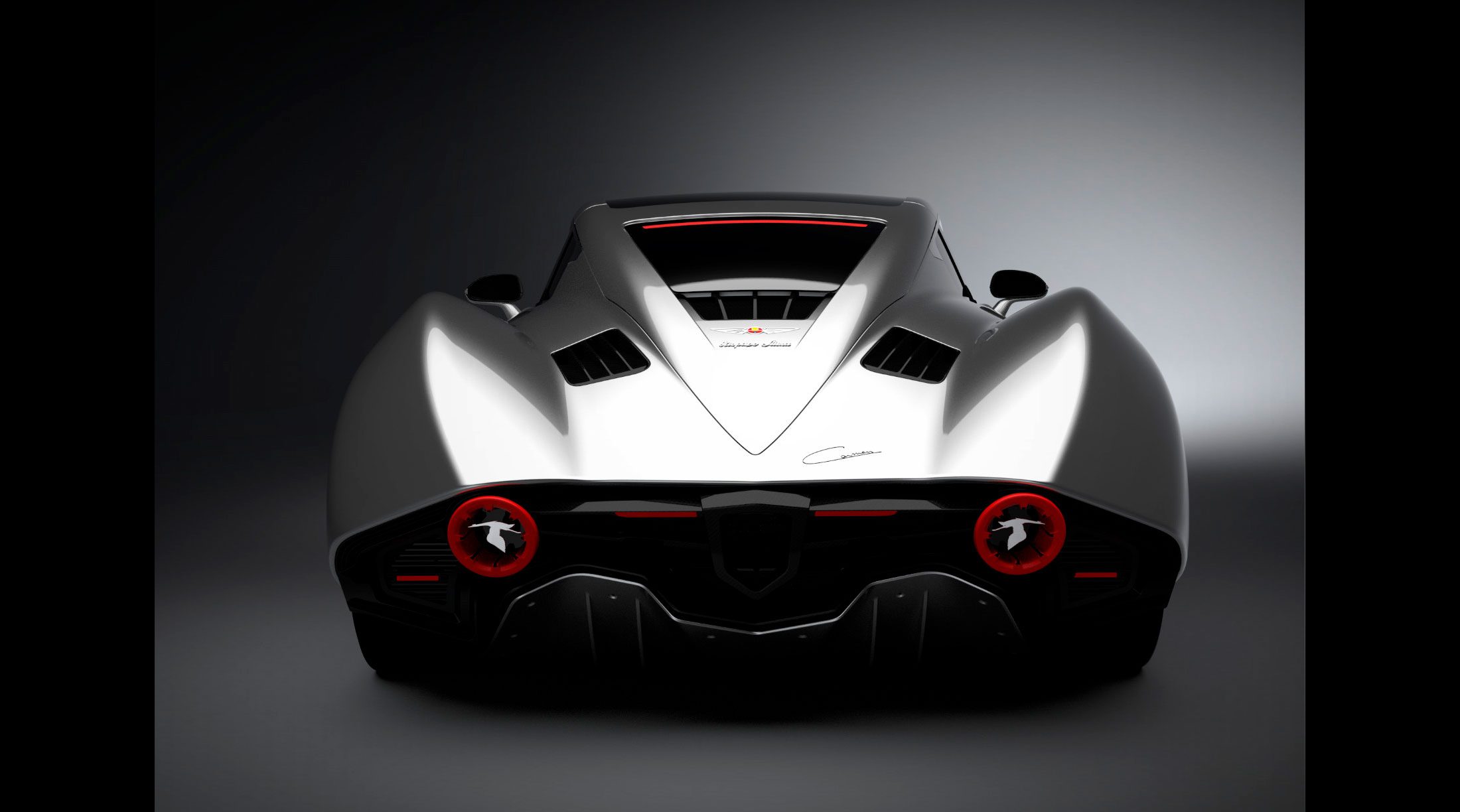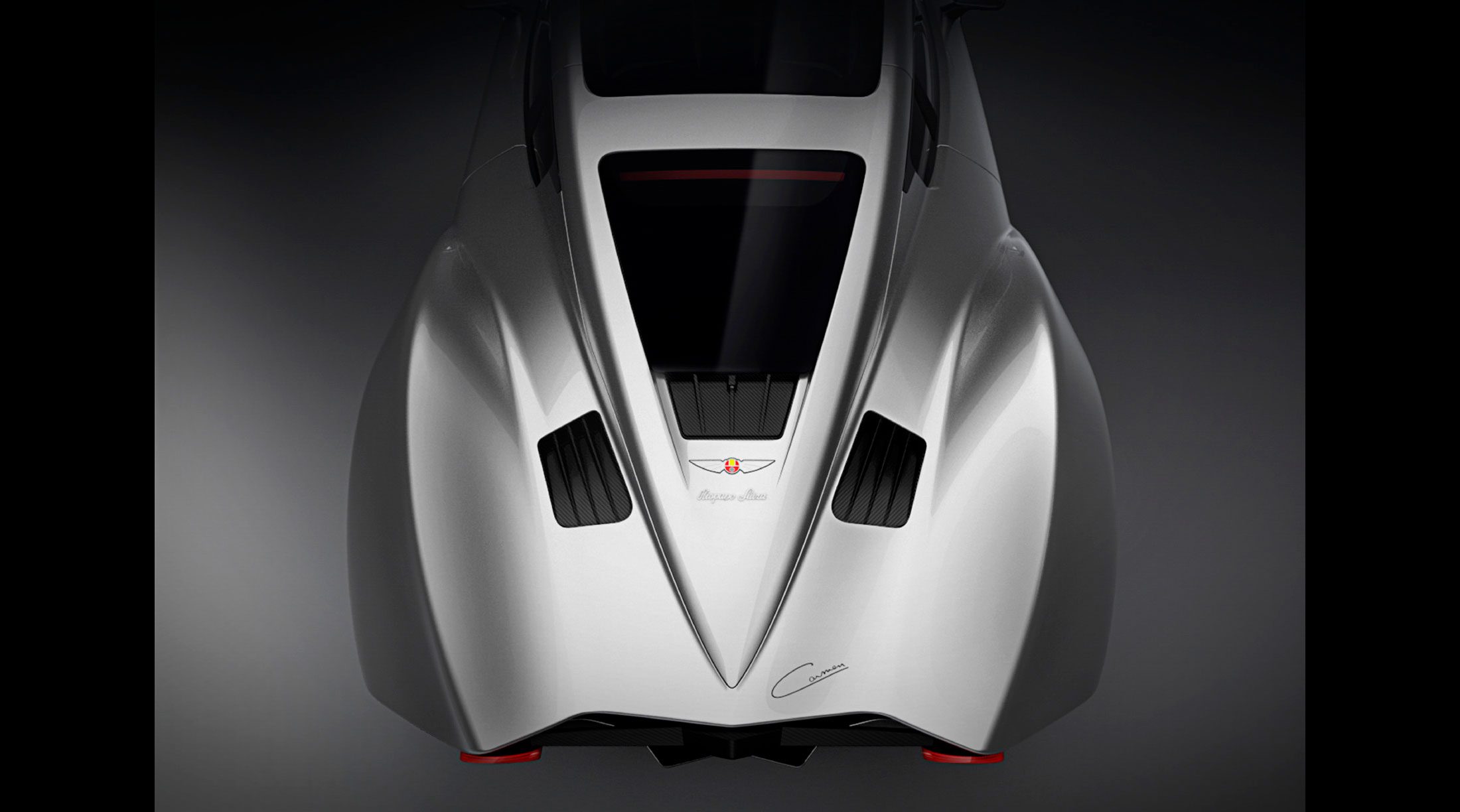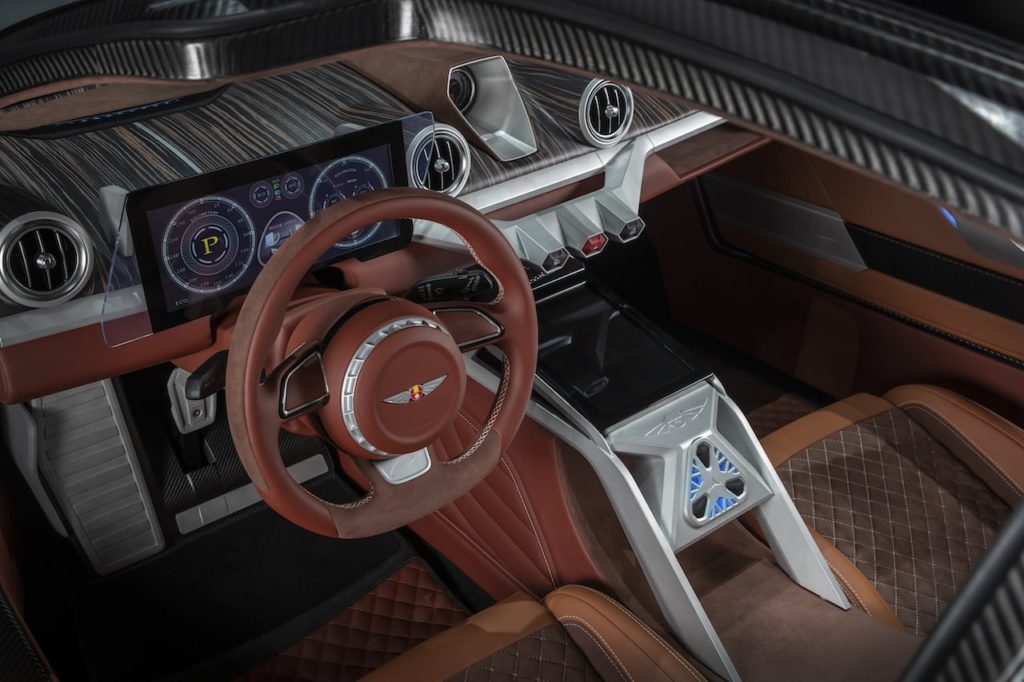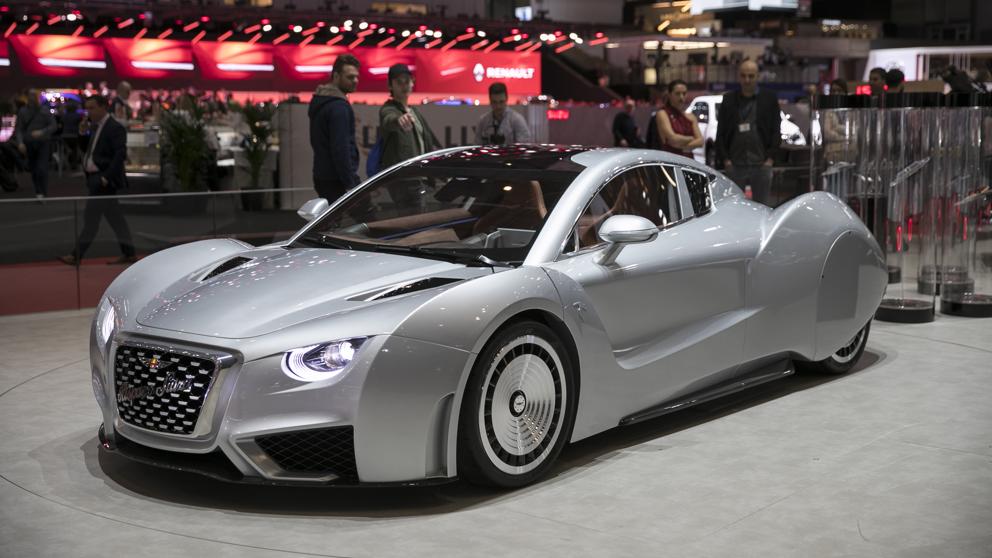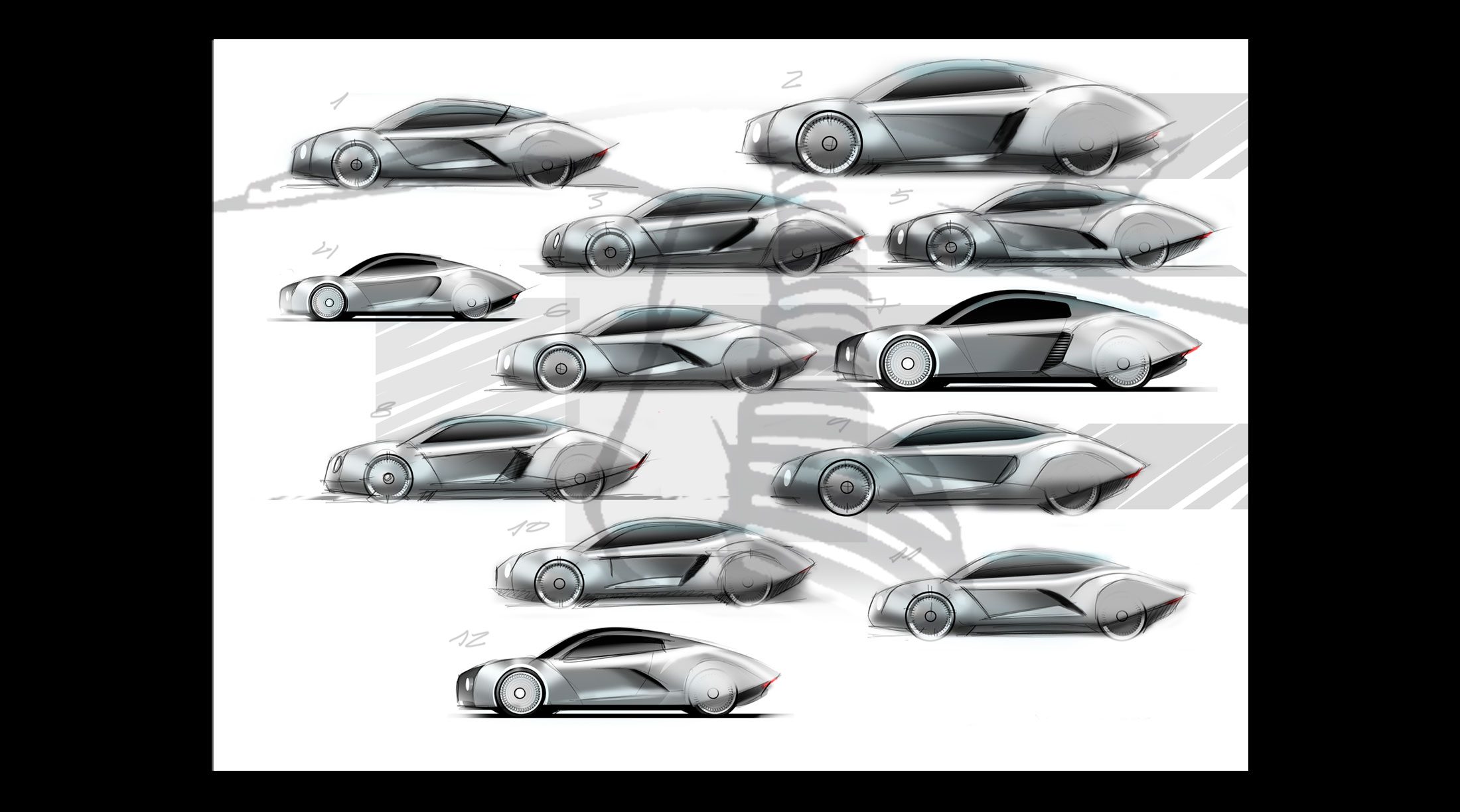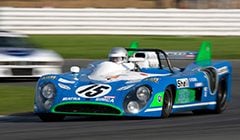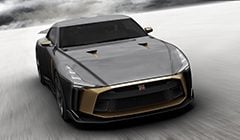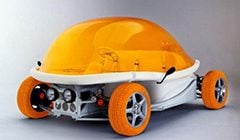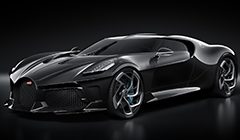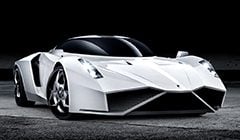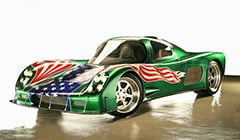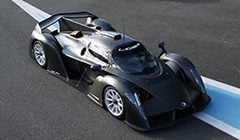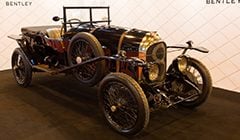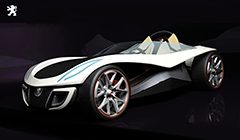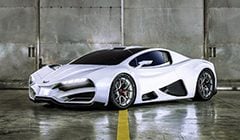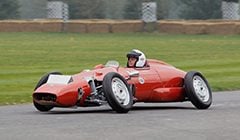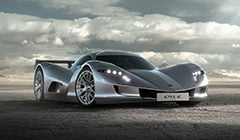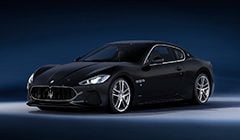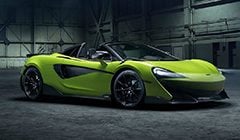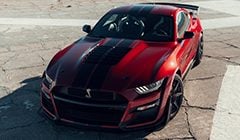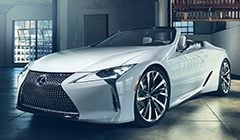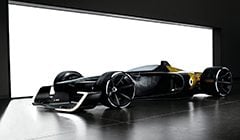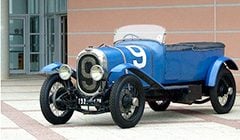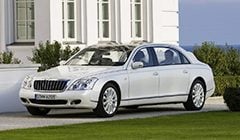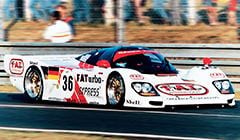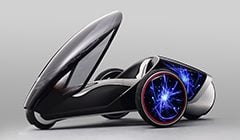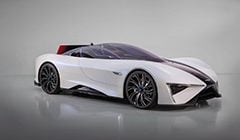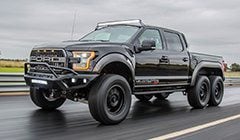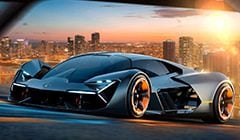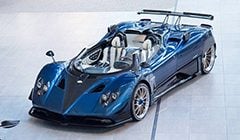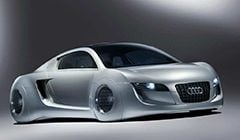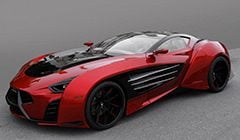- 711

- Chile
- cristobal458
Hispano Suiza Carmen '20
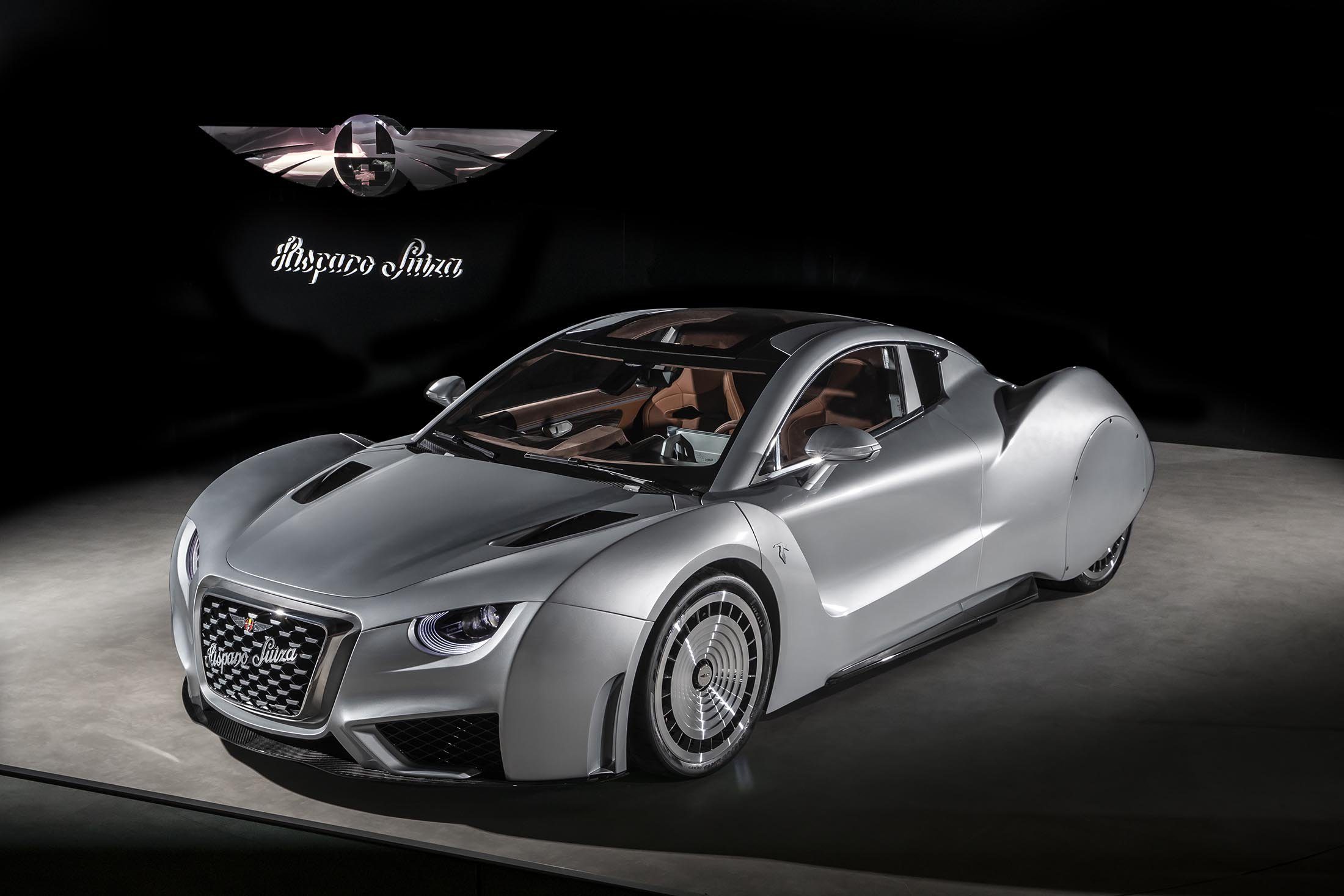
A next-generation electric hyperlux grand tourer
• Hypercar-rivalling performance from a carbon fibre monocoque chassis and advanced fully-electric powertrain
• Brand’s heritage influences elegant and contemporary design, while attention to detail and craftsmanship ensure exceptional luxury
• The Carmen embodies a proud Spanish spirit and strong family legacy
Barcelona, 28 February 2019 – The all-new Hispano Suiza Carmen makes its global debut at the 2019 Geneva Motor Show, signalling the resurgence of an iconic Spanish luxury car brand.
Designed, developed and manufactured in Barcelona, the fully-electric Carmen is a ‘hyperlux’ grand touring car – the ultimate expression of classically-inspired design, cutting edge chassis and powertrain technology, exhilarating power and expertlyengineered dynamics. It pioneers a new ‘hyperlux’ vehicle segment – one that combines hypercar performance with exquisite luxury, painstaking craftsmanship and meticulous attention to technical and engineering details. A genuinely unique proposition, and a fitting tribute to an iconic Spanish car brand.
The production car world premiere is the realisation of a lifelong ambition for the Suqué Mateu family and, in particular, for Miguel Suqué Mateu, current President of Hispano Suiza and great-grandson of the brand’s founder. The Carmen is inspired by the unique style and elegance of Mr Suqué Mateu’s mother, Carmen Mateu (1936-2018).
The all-new production model has been created from the ground-up to deliver an exceptional and luxurious driving experience. Combining an advanced, fully-electric 750 kW (1,019 PS) powertrain with a bespoke super-stiff carbon fibre monocoque, double-wishbone front and rear suspension and torque vectoring, Carmen delivers exceptional dynamics, with a focus on thrilling performance and an easy-to-drive character. With such prodigious power, and a kerb weight of just 1,690 kg, the Carmen has world-class performance capabilities: 100 km/h is reached in under three seconds, and top speed is electronically-limited to 250 km/h.
The Carmen’s highly emotive and striking design perfectly balances aggressive sportiness and timeless elegance, in a profile that is clearly distinguishable from anything else on the road. The styling is heavily influenced by mould-breaking Hispano Suiza cars of the early 20th century, specifically the 1938 Hispano Suiza H6C Dubonnet Xenia, of which only one example was ever produced. The Carmen condenses the brand’s heritage of elegant design into a modern-day hyperlux car.
• Hypercar-rivalling performance from a carbon fibre monocoque chassis and advanced fully-electric powertrain
• Brand’s heritage influences elegant and contemporary design, while attention to detail and craftsmanship ensure exceptional luxury
• The Carmen embodies a proud Spanish spirit and strong family legacy
Barcelona, 28 February 2019 – The all-new Hispano Suiza Carmen makes its global debut at the 2019 Geneva Motor Show, signalling the resurgence of an iconic Spanish luxury car brand.
Designed, developed and manufactured in Barcelona, the fully-electric Carmen is a ‘hyperlux’ grand touring car – the ultimate expression of classically-inspired design, cutting edge chassis and powertrain technology, exhilarating power and expertlyengineered dynamics. It pioneers a new ‘hyperlux’ vehicle segment – one that combines hypercar performance with exquisite luxury, painstaking craftsmanship and meticulous attention to technical and engineering details. A genuinely unique proposition, and a fitting tribute to an iconic Spanish car brand.
The production car world premiere is the realisation of a lifelong ambition for the Suqué Mateu family and, in particular, for Miguel Suqué Mateu, current President of Hispano Suiza and great-grandson of the brand’s founder. The Carmen is inspired by the unique style and elegance of Mr Suqué Mateu’s mother, Carmen Mateu (1936-2018).
The all-new production model has been created from the ground-up to deliver an exceptional and luxurious driving experience. Combining an advanced, fully-electric 750 kW (1,019 PS) powertrain with a bespoke super-stiff carbon fibre monocoque, double-wishbone front and rear suspension and torque vectoring, Carmen delivers exceptional dynamics, with a focus on thrilling performance and an easy-to-drive character. With such prodigious power, and a kerb weight of just 1,690 kg, the Carmen has world-class performance capabilities: 100 km/h is reached in under three seconds, and top speed is electronically-limited to 250 km/h.
The Carmen’s highly emotive and striking design perfectly balances aggressive sportiness and timeless elegance, in a profile that is clearly distinguishable from anything else on the road. The styling is heavily influenced by mould-breaking Hispano Suiza cars of the early 20th century, specifically the 1938 Hispano Suiza H6C Dubonnet Xenia, of which only one example was ever produced. The Carmen condenses the brand’s heritage of elegant design into a modern-day hyperlux car.
Hispano Suiza has curated the finest materials for the bespoke interior, taking styling inspiration from the interiors of the most luxurious Hispano Suiza models of the past. The exquisite two-seat cabin exudes refinement and opulence, perfectly complementing the car’s effortless performance.
Hispano Suiza’s approach for the Carmen is illustrated by exceptional attention to detail delivered through artisan handcraftsmanship. The car’s design, engineering and production has been undertaken in Barcelona by a skilled team of highly-experienced experts at QEV Technologies, an electric powertrain and motorsport engineering specialist.
The Hispano Suiza Carmen will cost from €1.5m (plus taxes), and only 19 examples of the Carmen will be produced from late 2019 until 2021. Road testing begins in mid-2019, with the first media drives in October. Prospective customers can now register their interest to purchase one of the exclusive Carmen models, ahead of its official customer launch date in June 2020.
Elegant and contemporary design, drawing on the iconic brand’s heritage
The Hispano Suiza team was clear on the primary goal from the earliest stages of the vehicle development programme: the rebirth of the brand must pay homage to its origins. The market for high performance cars is dominated by aggressive sportscars, styled to look futuristic and to boldly demonstrate their technical accomplishments. Carmen is different. Hispano Suiza is different. Since its earliest days at the start of the 20th century, the brand has always been different.
One fundamental force in Hispano Suiza’s history has been beautiful styling. And one of the most striking designs, which inspired the new Carmen more than any other, was the 1938 Hispanos Suiza Dubonnet Xenia, a unique piece of one-of-a-kind art that was commissioned by André Dubonnet. The former World War One fighter pilot raced in Hispano Suiza cars and was also a prolific inventor who was passionate about modern aerodynamics. He styled his special car, which also showcased Dubonnet’s new coil spring suspension innovation. The suspension system was later licenced to several other automobile manufacturers.
The Carmen unmistakably honours the Dubonnet Xenia’s distinctive form and styling characteristics, resulting in a retrospective aerodynamic teardrop profile, albeit modernised for the 2020s.
Deliberately, the Carmen’s styling is provocative, intended to generate an emotive reaction, and to be instantly recognisable.
The face of the Carmen is a dominated by a large chrome-framed, deep set trapezoidal grille inspired by its forebears from the 1920s and 30s. At its centre is the italicised heritage ‘Hispano Suiza’ script and the marque’s new badge, a modern interpretation of its original logo.
Semi-circular combination headlamps are set like feline eyes with an aggressive ‘frown’, seemingly projecting light from deep within the car’s body, with concentric LED rings for daytime running lights and direction indicators. A pair of large air inlets flank the grille at the chin of the front fender, accentuating the dominance of the central grille, and emphasising the impression of dynamic forward movement. A ‘floating’ front splitter – almost invisible in black – channels air under the car.
To each side, a sharp crease provides a dramatic change of surface between the hood and the front quarter panel over the front wheel to the base of the A-pillar. The bodyside line is heavily sculpted through the door panel, which houses an air outlet from behind the front wheel. This concave bodyside scoop ends just as the dramatic rear haunch takes over: a smooth ellipsis incorporates the covered rear wheel –directly inspired by the Dubonnet Xenia’s tell-tale tear-drop aerodynamic cues.
Viewed from the rear, the taught haunches that arch over the covered rear wheels taper slightly, flanking a dramatic narrowing of the roofline and rear screen that ends in a distinctive, sharp, rear-facing point – the trailing tail of the teardrop. The model name is displayed proudly at the clean straight lip of the rear deck panel: ‘Carmen’ is presented in script, a direct representation of Carmen Mateu’s signature.
Beneath the abrupt lip of the rear deck panel is a dark void, a space that is punctured by the Carmen’s distinctive taillamps and prominent rear diffuser. The circular combination rear lamps initially appear relatively conventional with the taillamps and brake lamps illuminating as LED rings. But that’s where convention ends. First, in the centre of the rings, the signature Hispano Suiza stork graphic – modernised for the brand’s reincarnation – features as the car’s reversing lamps. Further theatre is provided by the rear indicators. The outer rings of each rear lamp incorporate eight small teeth around their inner perimeter. These teeth are in fact the tips of longitudinal LED strips that extend from deep within the car’s bodywork. When seen from an angle, the indicator pulses along the length of the lamp cones creating a dramatic and arresting visual spectacle.
Aerodynamically, a principal challenge for the development team was achieving low drag while also ensuring the requisite airflow across the car’s radiators to cool the battery and powertrain components efficiently. Testing and development was undertaken using computational fluid dynamics (CFD) and virtual wind tunnel simulation software.
The drag coefficient is Cd 0.325, lower than the Porsche 918 Spyder (0.34), Koenigsegg Agera R (0.37) and Ferrari F12 (0.33).
The front splitter, flat floor and rear diffuser work in unison to reduce lift. The front splitter creates a low-pressure zone at the front, while the diffuser does the same between rear wheels using a convex geometry effect. The flat floor keeps the flow energy as high as possible from the front to the rear, enhancing the efficacy of the rear diffuser.
Air is channelled into the rear wheel arch through a low-drag ‘NACA’ air inlet in the flat floor and out through the rear end of the car: this airflow aids convection cooling of the rear brakes.
Exquisite luxury interior blends modern technologies with classic sophistication
The passenger cabin of the Carmen is a finely conceived marriage of classic design cues from the first chapter of Hispano Suiza’s story, and modern, advanced technology to deliver extraordinary luxury, comfort and refinement.
Before even entering the car, the driver and passenger are provided with a dramatic theatrical performance as the scissor doors rise and pivot in one smooth, elegant movement
Awaiting the occupants inside the car is a combination of the finest leather and Alcantara that is used to trim the heated, four-way power-adjustable carbon fibre composite seats, as well as the door panels and roof lining. All upholstery is handtrimmed and hand-sewn in-house at Hispano Suiza’s Barcelona assembly facility, helping ensure that the driver and passenger are cosseted within an authentically sumptuous environment. Such is the focus on the ultimate ownership experience, each Carmen will feature a custom perfumed interior, specified and developed with the buyer to ensure the car is aligned perfectly with their preferences.
The artisan craftsmanship that is apparent throughout the interior retains a direct lineage to the brand’s history. For example, the dash reflects the characteristics of the Carmen’s predecessors, with a traditional style using real wood veneers and machined high-grade aluminium, perforated by authentic toggle switchgear for reassuring mechanical tactility. The classic clockface at the centre of the dash features a Swiss mechanism with design and development by a Spanish watch maker. It echoes the position and status of the timepieces that featured in the brand’s earlier cars. Similarly, the triangular gear selector is a direct reference to the art deco steel triangle that featured on the dash of Hispano Suiza’s in the company’s historic models.
While the style is unashamedly retrospective, the technologies employed deliver the best experience possible for occupants. Ambient LED lighting strips are hidden along the door panels and in the footwells to ensure that the interior is a welcoming and inviting space.
The steering wheel spokes feature smartphone and multimedia controls, while a highly-intuitive user interface sits at the centre of the driver-focused infotainment console. A high-definition, 10.1-inch touchscreen display allows owners make infotainment selections and configure vehicle settings with ease. The screen is also where video output from the rear parking camera is presented.
High-fidelity audio is delivered by six premium speakers and a subwoofer, providing a unique 360-degree audio experience. Bluetooth and USB audio connectivity, as well as Android Auto and Apple CarPlay integration, is included as standard.
A dedicated Hispano Suiza mobile app enables owners to remotely set cabin temperature, operate the lights, and set the alarm, as well as monitoring the battery charge status. Inside the car, mobile phones can be recharged wirelessly by placing the device on a charging pad beneath the centre console, or via a USB connection.
Advanced electric powertrain delivering effortless performance
One of the fundamental decisions made in conceiving the first Hispano Suiza production car since the late 1940s was the choice of powertrain technology.
The development team and Hispano Suiza senior executives decided quickly that the car should look forward and embrace the future. This aligned with the eco and sustainability values of Hispano Suiza’s parent company, Grup Peralada, the Suqué Mateu family’s business. In addition, before co-founding the company in 1904, Hispano Suiza’s Technical Director, Mark Birkigt experimented with electric powertrains. He created one of Spain’s first electric vehicle prototypes – another factor influencing the decision to opt for a fully-electric powertrain for the Carmen.
Hispano Suiza’s production partner in the development of the Carmen – QEV Technologies – has extensive experience in developing electric vehicle powertrain technology, specifically for teams participating in FIA Formula E and FIA Electric Production Car Series (EPCS). As such, QEV Technologies brings unprecedented levels of engineering know-how to the Carmen’s electric powertrain, contributing to the Carmen’s exceptional performance, efficiency, reliability and safety.
The Carmen is powered by two 375 kW permanent-magnet synchronous motors (PMSM), one for each rear wheel. Each motor’s significant torque is controlled through sophisticated torque vectoring systems developed in-house by QEV Technologies.
The fully-electric 750 kW (1,019 PS) power output combined with a low kerb weight of just 1,690 kg, enable the Carmen to sprint from 0 - 100 km/h in under three seconds, and on to a top speed of 250 km/h (electronically-limited).
The high-energy battery pack is T-shaped, running as a central spine of the car and behind the seats. It also serves as a tuned mass damper (TMD), providing stability and reducing structural vibration.
The Lithium Ion polymer battery pack boasts a power density of 230 Wh/kg on a fixed volume of 560 litres, for a base capacity of 80 kWh. The carbon fibre battery housing allows for easy upgrades when new technologies become available, future-proofing the Carmen: by 2020, it is anticipated that 300 Wh/kg should be a commercial reality, increasing the battery capacity up to 105 kWh. High-efficiency mechanical and electric components give a total energy loss from the battery to the ground of less than 10%, maximising vehicle range, which is targeted to exceed 400 km.
The battery pack – made up of 700 cells – was designed and produced entirely inhouse, including a complete temperature control system to ensure the cells can operate optimally. The battery monitoring system ensures stable charge and discharge performance and delivers the safety strategies required for a 750V DC architecture. The Carmen is compatible with the 80 kW CCS2 fast charging protocol, as well as CHAdeMO and GB/T charging options.
The battery and electric powertrain components are liquid-cooled via three front radiators: one under the hood at the front of the car for battery cooling, and one each side, inboard of the front wheel arches, for cooling powertrain components. The three front air intakes provide airflow to help cool the electric drivetrain system and battery. The location, size and diffuser-style shape of these intakes, together with split planes, distribute the air in the radiator’s core to achieve the optimal balance of drag and high air flow across the radiators. The outlets in the hood that expel air from the front radiator, and those in the front wheel arches that expel air from the side radiators, have been carefully designed and located to minimise drag.
Battery heat expulsion is controlled by the front central radiator and condenser. The battery thermal management system uses a passive heat exchanger (radiator) and an active cooling system, which shares its refrigeration cycle with the passenger cabin’s air conditioning. Also, a PTC (Positive Temperature Coefficient) heater warms the battery in cold conditions.
The car’s Electronic Control Unit (ECU) software manages all vehicle power and control strategies, continuously interrogating myriad data streams and instruction actuators to control vehicle behaviour. These strategies are all developed and tested in-house by Hispano Suiza software engineers. A complex network feeds a huge amount of data to the ECU at a rate of up to 1,000 samples per second.
Data is also fed via the cloud to the Hispano Suiza back office infrastructure to ensure that vehicle status and condition is monitored by Hispano Suiza in real time to ensure ultimate reliability. This functionality also enables eCall emergency services as required.
Bespoke carbon fibre monocoque chassis
The Hispano Suiza Carmen is one of the most carbon fibre intense cars in the world. Carbon fibre composites are employed extensively throughout the vehicle, and account for the vast proportion of vehicle structures.
Even in this, the most elementary structure of the Carmen, Hispano Suiza has created a unique work of art: the hand laid carbon fibre deployed for the monocoque chassis is specifically oriented in a mirrored opposing weave pattern. This results in the forward-facing directional arrow shape down the centre-line of the car from back to front.
Carbon fibre composite is also used for the crash protection structures that absorb and dissipate impact energy to protect the monocoque at the front and rear. Unusually, the rear subframe is also constructed in carbon fibre and is bolted to the primary chassis structure.
The monocoque chassis weighs only 195 kg and exhibits exceptionally high rigidity to provide a torsional stiffness rating of 50,000 Nm/deg. This not only contributes to a stronger and safer passenger cell, but also benefits the car’s dynamic performance. The Carmen’s stiffness-to-mass ratio (256 Nm/deg per kg) out-performs any other hypercar: for comparison, the Lamborghini Aventador’s stiffness-to-mass ratio is 237 Nm/deg per kg.
The 11 carbon fibre body panels are also incredibly lightweight, tipping the scales at just 64.5 kg – including the front splitter and rear diffuser.
Even the seat structures and interior upholstery-support panels are carbon fibre composites. Furthermore, composites are also deployed as electric insulation materials and as part of the car’s NVH management, as a sound and vibration dampening substance.
The opening mechanism for the scissor doors employs a combination of an electric actuator and a gas spring, which takes over the door weight as it opens.
The Carmen’s development team was focused intensely on honouring the legacy of early Hispano Suiza cars that, from the early 1920s, established a reputation as exceptional drivers’ cars; rapid, reliable and comfortable machines that could make every journey enjoyable and very swift. Hispano Suiza models were recognised as benchmarks for the maturing car industry and achieved repeated success in racing and endurance competitions around the world.
Inspired by the performance-focused past, the blistering straight-line speed is married with driver-focused dynamic capabilities thanks to the highly experienced team at QEV Technologies. It has developed and integrated a range of advanced chassis systems to achieve the dynamic goals for the car. Not only will the Carmen exhibit exceptional handling, but the characteristics and behaviour of the car should be predictable and easy to drive. Carmen is not a racing car for the road: rather, it is a grand tourer that embraces and harnesses the most advanced motorsport-inspired technologies and techniques to engage and bring joy to the driver.
Double wishbone suspension is fitted at the front and rear, which is paired with adaptive damping control and variable roll stiffness distribution technologies to deliver precise and responsive handling, while retaining a refined and comfortable ride.
True torque vectoring manages the distribution of the two motors’ torque to each rear wheel, according to driver inputs and levels of grip available. This provides a series of benefits, particularly in dynamic response during the most spirited driving, greater high-speed stability, and improved safety on low-grip surfaces.
Carmen employs a brake-by-wire system. In place of a regular hydraulic braking system, the electronic braking system saves weight and provides more rapid response, as well as enabling the recovery of energy during braking, which can be returned to the battery.
Additional active safety technologies include anti-lock braking (ABS), traction control (TCS) and electronic stability control (ESP) systems. Meanwhile, the Carmen’s brakes are powerful carbon-ceramic composite units from AP Racing. The 380 x 34 mm front and rear ceramic discs work with the six-piston Radi-CAL calipers to ensure the Carmen can shed speed rapidly and consistently.
Testing and development
Remarkably, the Carmen was still merely a conceptual idea just nine months ago. The design programme began in July 2018 with the target to have the first production-intent vehicle ready to present at the Geneva Motor Show in March 2019. Equally impressive is that the Carmen is not the result of hundreds of designs and engineers. A small but passionate development team of just 25 is responsible for designing, developing and building the first Carmen.
A major factor in the short development period is the extensive reliance on engineering simulations using computer-aided engineering (CAE) technologies. Simulations have used Altair Hyperworks Suite software, which offers a wide range of simulation techniques to attack different problems during the Carmen’s design and development.
Soon after the Geneva Motor Show, Carmen will continue its testing and development phase at the world-famous IDIADA (Institute for Applied Automotive Research) test facilities in Tarragona, Spain, as well as on local race tracks, the Pyrenees mountains and the roads in the south of Spain. This process is anticipated to take up to six months.
A proud Spanish spirit and strong family legacy
Hispano Suiza was responsible for the design and manufacture of more than 12,000 luxury performance cars and 50,000 aeroplane engines between 1904 and 1946. Even before he joined Hispano Suiza as its Technical Director, Marc Birkigt (from Switzerland) was experimenting with cutting edge technologies in the new era of the automobile, leading a team that built one of Spain’s first electric car prototypes in 1899.
Some of the innovations that he later went on to develop helped Hispano Suiza cars to be considered among the world’s finest and most advanced. Indeed, many media and high-profile automotive enthusiasts considered Hispano Suiza cars among the best in the world. Even three decades after Hispano Suiza had stopped making cars, other luxury brands were still using automotive technology licenced from Hispano Suiza.
Hispano Suiza is a fourth-generation family business. Its president, Miguel Suqué Mateu is the great-grandson of the brand’s founder, Damián Mateu. It is believed that Hispano Suiza is unique in nurturing an unbroken family lineage in the reintroduction of an automotive brand born in the first era of the automobile. The company is intensely proud of its Spanish roots – its headquarters, technical centre, and manufacturing facility are all based in Barcelona, and more than three-quarters of the Carmen’s components are sourced in Spain.
Through the President, the Mateu family retains an intimate relationship with the reborn Hispano Suiza operation, influencing the brand’s direction, management, and planning, plus the design and specification of the new Carmen. The family also sustains a link to the earliest days of Hispano Suiza remaining good friends with the Birkigt family and seeing each other regularly.
The Mateu’s were also keen for the Carmen to reflect the heritage and values of parent company, Grup Peralada, including design cues, fashion inspiration, core eco and sustainability values, plus an interest in the sustained economic success of Spain.
Grup Peralada
Grup Peralada was established in 1904 and has been owned and managed by the Suqué Mateu family since it was founded. The group of businesses has continued to grow and represents the pinnacle of luxury in gastronomy and entertainment. Its highlights include a three-time Michelin star restaurant – Castell Peralada – in northeast Spain, where it also owns 12 award-winning wineries, an 18-hole golf course and hotel and offers the world’s first wine-spa health treatments. It also hosts the annual Peralada International Music Festival, celebrating the arts, opera and ballet. It operates 21 restaurants, eight casinos and six five-star hotels across Europe and Latin America.
Hispano Suiza’s approach for the Carmen is illustrated by exceptional attention to detail delivered through artisan handcraftsmanship. The car’s design, engineering and production has been undertaken in Barcelona by a skilled team of highly-experienced experts at QEV Technologies, an electric powertrain and motorsport engineering specialist.
The Hispano Suiza Carmen will cost from €1.5m (plus taxes), and only 19 examples of the Carmen will be produced from late 2019 until 2021. Road testing begins in mid-2019, with the first media drives in October. Prospective customers can now register their interest to purchase one of the exclusive Carmen models, ahead of its official customer launch date in June 2020.
Elegant and contemporary design, drawing on the iconic brand’s heritage
The Hispano Suiza team was clear on the primary goal from the earliest stages of the vehicle development programme: the rebirth of the brand must pay homage to its origins. The market for high performance cars is dominated by aggressive sportscars, styled to look futuristic and to boldly demonstrate their technical accomplishments. Carmen is different. Hispano Suiza is different. Since its earliest days at the start of the 20th century, the brand has always been different.
One fundamental force in Hispano Suiza’s history has been beautiful styling. And one of the most striking designs, which inspired the new Carmen more than any other, was the 1938 Hispanos Suiza Dubonnet Xenia, a unique piece of one-of-a-kind art that was commissioned by André Dubonnet. The former World War One fighter pilot raced in Hispano Suiza cars and was also a prolific inventor who was passionate about modern aerodynamics. He styled his special car, which also showcased Dubonnet’s new coil spring suspension innovation. The suspension system was later licenced to several other automobile manufacturers.
The Carmen unmistakably honours the Dubonnet Xenia’s distinctive form and styling characteristics, resulting in a retrospective aerodynamic teardrop profile, albeit modernised for the 2020s.
Deliberately, the Carmen’s styling is provocative, intended to generate an emotive reaction, and to be instantly recognisable.
The face of the Carmen is a dominated by a large chrome-framed, deep set trapezoidal grille inspired by its forebears from the 1920s and 30s. At its centre is the italicised heritage ‘Hispano Suiza’ script and the marque’s new badge, a modern interpretation of its original logo.
Semi-circular combination headlamps are set like feline eyes with an aggressive ‘frown’, seemingly projecting light from deep within the car’s body, with concentric LED rings for daytime running lights and direction indicators. A pair of large air inlets flank the grille at the chin of the front fender, accentuating the dominance of the central grille, and emphasising the impression of dynamic forward movement. A ‘floating’ front splitter – almost invisible in black – channels air under the car.
To each side, a sharp crease provides a dramatic change of surface between the hood and the front quarter panel over the front wheel to the base of the A-pillar. The bodyside line is heavily sculpted through the door panel, which houses an air outlet from behind the front wheel. This concave bodyside scoop ends just as the dramatic rear haunch takes over: a smooth ellipsis incorporates the covered rear wheel –directly inspired by the Dubonnet Xenia’s tell-tale tear-drop aerodynamic cues.
Viewed from the rear, the taught haunches that arch over the covered rear wheels taper slightly, flanking a dramatic narrowing of the roofline and rear screen that ends in a distinctive, sharp, rear-facing point – the trailing tail of the teardrop. The model name is displayed proudly at the clean straight lip of the rear deck panel: ‘Carmen’ is presented in script, a direct representation of Carmen Mateu’s signature.
Beneath the abrupt lip of the rear deck panel is a dark void, a space that is punctured by the Carmen’s distinctive taillamps and prominent rear diffuser. The circular combination rear lamps initially appear relatively conventional with the taillamps and brake lamps illuminating as LED rings. But that’s where convention ends. First, in the centre of the rings, the signature Hispano Suiza stork graphic – modernised for the brand’s reincarnation – features as the car’s reversing lamps. Further theatre is provided by the rear indicators. The outer rings of each rear lamp incorporate eight small teeth around their inner perimeter. These teeth are in fact the tips of longitudinal LED strips that extend from deep within the car’s bodywork. When seen from an angle, the indicator pulses along the length of the lamp cones creating a dramatic and arresting visual spectacle.
Aerodynamically, a principal challenge for the development team was achieving low drag while also ensuring the requisite airflow across the car’s radiators to cool the battery and powertrain components efficiently. Testing and development was undertaken using computational fluid dynamics (CFD) and virtual wind tunnel simulation software.
The drag coefficient is Cd 0.325, lower than the Porsche 918 Spyder (0.34), Koenigsegg Agera R (0.37) and Ferrari F12 (0.33).
The front splitter, flat floor and rear diffuser work in unison to reduce lift. The front splitter creates a low-pressure zone at the front, while the diffuser does the same between rear wheels using a convex geometry effect. The flat floor keeps the flow energy as high as possible from the front to the rear, enhancing the efficacy of the rear diffuser.
Air is channelled into the rear wheel arch through a low-drag ‘NACA’ air inlet in the flat floor and out through the rear end of the car: this airflow aids convection cooling of the rear brakes.
Exquisite luxury interior blends modern technologies with classic sophistication
The passenger cabin of the Carmen is a finely conceived marriage of classic design cues from the first chapter of Hispano Suiza’s story, and modern, advanced technology to deliver extraordinary luxury, comfort and refinement.
Before even entering the car, the driver and passenger are provided with a dramatic theatrical performance as the scissor doors rise and pivot in one smooth, elegant movement
Awaiting the occupants inside the car is a combination of the finest leather and Alcantara that is used to trim the heated, four-way power-adjustable carbon fibre composite seats, as well as the door panels and roof lining. All upholstery is handtrimmed and hand-sewn in-house at Hispano Suiza’s Barcelona assembly facility, helping ensure that the driver and passenger are cosseted within an authentically sumptuous environment. Such is the focus on the ultimate ownership experience, each Carmen will feature a custom perfumed interior, specified and developed with the buyer to ensure the car is aligned perfectly with their preferences.
The artisan craftsmanship that is apparent throughout the interior retains a direct lineage to the brand’s history. For example, the dash reflects the characteristics of the Carmen’s predecessors, with a traditional style using real wood veneers and machined high-grade aluminium, perforated by authentic toggle switchgear for reassuring mechanical tactility. The classic clockface at the centre of the dash features a Swiss mechanism with design and development by a Spanish watch maker. It echoes the position and status of the timepieces that featured in the brand’s earlier cars. Similarly, the triangular gear selector is a direct reference to the art deco steel triangle that featured on the dash of Hispano Suiza’s in the company’s historic models.
While the style is unashamedly retrospective, the technologies employed deliver the best experience possible for occupants. Ambient LED lighting strips are hidden along the door panels and in the footwells to ensure that the interior is a welcoming and inviting space.
The steering wheel spokes feature smartphone and multimedia controls, while a highly-intuitive user interface sits at the centre of the driver-focused infotainment console. A high-definition, 10.1-inch touchscreen display allows owners make infotainment selections and configure vehicle settings with ease. The screen is also where video output from the rear parking camera is presented.
High-fidelity audio is delivered by six premium speakers and a subwoofer, providing a unique 360-degree audio experience. Bluetooth and USB audio connectivity, as well as Android Auto and Apple CarPlay integration, is included as standard.
A dedicated Hispano Suiza mobile app enables owners to remotely set cabin temperature, operate the lights, and set the alarm, as well as monitoring the battery charge status. Inside the car, mobile phones can be recharged wirelessly by placing the device on a charging pad beneath the centre console, or via a USB connection.
Advanced electric powertrain delivering effortless performance
One of the fundamental decisions made in conceiving the first Hispano Suiza production car since the late 1940s was the choice of powertrain technology.
The development team and Hispano Suiza senior executives decided quickly that the car should look forward and embrace the future. This aligned with the eco and sustainability values of Hispano Suiza’s parent company, Grup Peralada, the Suqué Mateu family’s business. In addition, before co-founding the company in 1904, Hispano Suiza’s Technical Director, Mark Birkigt experimented with electric powertrains. He created one of Spain’s first electric vehicle prototypes – another factor influencing the decision to opt for a fully-electric powertrain for the Carmen.
Hispano Suiza’s production partner in the development of the Carmen – QEV Technologies – has extensive experience in developing electric vehicle powertrain technology, specifically for teams participating in FIA Formula E and FIA Electric Production Car Series (EPCS). As such, QEV Technologies brings unprecedented levels of engineering know-how to the Carmen’s electric powertrain, contributing to the Carmen’s exceptional performance, efficiency, reliability and safety.
The Carmen is powered by two 375 kW permanent-magnet synchronous motors (PMSM), one for each rear wheel. Each motor’s significant torque is controlled through sophisticated torque vectoring systems developed in-house by QEV Technologies.
The fully-electric 750 kW (1,019 PS) power output combined with a low kerb weight of just 1,690 kg, enable the Carmen to sprint from 0 - 100 km/h in under three seconds, and on to a top speed of 250 km/h (electronically-limited).
The high-energy battery pack is T-shaped, running as a central spine of the car and behind the seats. It also serves as a tuned mass damper (TMD), providing stability and reducing structural vibration.
The Lithium Ion polymer battery pack boasts a power density of 230 Wh/kg on a fixed volume of 560 litres, for a base capacity of 80 kWh. The carbon fibre battery housing allows for easy upgrades when new technologies become available, future-proofing the Carmen: by 2020, it is anticipated that 300 Wh/kg should be a commercial reality, increasing the battery capacity up to 105 kWh. High-efficiency mechanical and electric components give a total energy loss from the battery to the ground of less than 10%, maximising vehicle range, which is targeted to exceed 400 km.
The battery pack – made up of 700 cells – was designed and produced entirely inhouse, including a complete temperature control system to ensure the cells can operate optimally. The battery monitoring system ensures stable charge and discharge performance and delivers the safety strategies required for a 750V DC architecture. The Carmen is compatible with the 80 kW CCS2 fast charging protocol, as well as CHAdeMO and GB/T charging options.
The battery and electric powertrain components are liquid-cooled via three front radiators: one under the hood at the front of the car for battery cooling, and one each side, inboard of the front wheel arches, for cooling powertrain components. The three front air intakes provide airflow to help cool the electric drivetrain system and battery. The location, size and diffuser-style shape of these intakes, together with split planes, distribute the air in the radiator’s core to achieve the optimal balance of drag and high air flow across the radiators. The outlets in the hood that expel air from the front radiator, and those in the front wheel arches that expel air from the side radiators, have been carefully designed and located to minimise drag.
Battery heat expulsion is controlled by the front central radiator and condenser. The battery thermal management system uses a passive heat exchanger (radiator) and an active cooling system, which shares its refrigeration cycle with the passenger cabin’s air conditioning. Also, a PTC (Positive Temperature Coefficient) heater warms the battery in cold conditions.
The car’s Electronic Control Unit (ECU) software manages all vehicle power and control strategies, continuously interrogating myriad data streams and instruction actuators to control vehicle behaviour. These strategies are all developed and tested in-house by Hispano Suiza software engineers. A complex network feeds a huge amount of data to the ECU at a rate of up to 1,000 samples per second.
Data is also fed via the cloud to the Hispano Suiza back office infrastructure to ensure that vehicle status and condition is monitored by Hispano Suiza in real time to ensure ultimate reliability. This functionality also enables eCall emergency services as required.
Bespoke carbon fibre monocoque chassis
The Hispano Suiza Carmen is one of the most carbon fibre intense cars in the world. Carbon fibre composites are employed extensively throughout the vehicle, and account for the vast proportion of vehicle structures.
Even in this, the most elementary structure of the Carmen, Hispano Suiza has created a unique work of art: the hand laid carbon fibre deployed for the monocoque chassis is specifically oriented in a mirrored opposing weave pattern. This results in the forward-facing directional arrow shape down the centre-line of the car from back to front.
Carbon fibre composite is also used for the crash protection structures that absorb and dissipate impact energy to protect the monocoque at the front and rear. Unusually, the rear subframe is also constructed in carbon fibre and is bolted to the primary chassis structure.
The monocoque chassis weighs only 195 kg and exhibits exceptionally high rigidity to provide a torsional stiffness rating of 50,000 Nm/deg. This not only contributes to a stronger and safer passenger cell, but also benefits the car’s dynamic performance. The Carmen’s stiffness-to-mass ratio (256 Nm/deg per kg) out-performs any other hypercar: for comparison, the Lamborghini Aventador’s stiffness-to-mass ratio is 237 Nm/deg per kg.
The 11 carbon fibre body panels are also incredibly lightweight, tipping the scales at just 64.5 kg – including the front splitter and rear diffuser.
Even the seat structures and interior upholstery-support panels are carbon fibre composites. Furthermore, composites are also deployed as electric insulation materials and as part of the car’s NVH management, as a sound and vibration dampening substance.
The opening mechanism for the scissor doors employs a combination of an electric actuator and a gas spring, which takes over the door weight as it opens.
The Carmen’s development team was focused intensely on honouring the legacy of early Hispano Suiza cars that, from the early 1920s, established a reputation as exceptional drivers’ cars; rapid, reliable and comfortable machines that could make every journey enjoyable and very swift. Hispano Suiza models were recognised as benchmarks for the maturing car industry and achieved repeated success in racing and endurance competitions around the world.
Inspired by the performance-focused past, the blistering straight-line speed is married with driver-focused dynamic capabilities thanks to the highly experienced team at QEV Technologies. It has developed and integrated a range of advanced chassis systems to achieve the dynamic goals for the car. Not only will the Carmen exhibit exceptional handling, but the characteristics and behaviour of the car should be predictable and easy to drive. Carmen is not a racing car for the road: rather, it is a grand tourer that embraces and harnesses the most advanced motorsport-inspired technologies and techniques to engage and bring joy to the driver.
Double wishbone suspension is fitted at the front and rear, which is paired with adaptive damping control and variable roll stiffness distribution technologies to deliver precise and responsive handling, while retaining a refined and comfortable ride.
True torque vectoring manages the distribution of the two motors’ torque to each rear wheel, according to driver inputs and levels of grip available. This provides a series of benefits, particularly in dynamic response during the most spirited driving, greater high-speed stability, and improved safety on low-grip surfaces.
Carmen employs a brake-by-wire system. In place of a regular hydraulic braking system, the electronic braking system saves weight and provides more rapid response, as well as enabling the recovery of energy during braking, which can be returned to the battery.
Additional active safety technologies include anti-lock braking (ABS), traction control (TCS) and electronic stability control (ESP) systems. Meanwhile, the Carmen’s brakes are powerful carbon-ceramic composite units from AP Racing. The 380 x 34 mm front and rear ceramic discs work with the six-piston Radi-CAL calipers to ensure the Carmen can shed speed rapidly and consistently.
Testing and development
Remarkably, the Carmen was still merely a conceptual idea just nine months ago. The design programme began in July 2018 with the target to have the first production-intent vehicle ready to present at the Geneva Motor Show in March 2019. Equally impressive is that the Carmen is not the result of hundreds of designs and engineers. A small but passionate development team of just 25 is responsible for designing, developing and building the first Carmen.
A major factor in the short development period is the extensive reliance on engineering simulations using computer-aided engineering (CAE) technologies. Simulations have used Altair Hyperworks Suite software, which offers a wide range of simulation techniques to attack different problems during the Carmen’s design and development.
Soon after the Geneva Motor Show, Carmen will continue its testing and development phase at the world-famous IDIADA (Institute for Applied Automotive Research) test facilities in Tarragona, Spain, as well as on local race tracks, the Pyrenees mountains and the roads in the south of Spain. This process is anticipated to take up to six months.
A proud Spanish spirit and strong family legacy
Hispano Suiza was responsible for the design and manufacture of more than 12,000 luxury performance cars and 50,000 aeroplane engines between 1904 and 1946. Even before he joined Hispano Suiza as its Technical Director, Marc Birkigt (from Switzerland) was experimenting with cutting edge technologies in the new era of the automobile, leading a team that built one of Spain’s first electric car prototypes in 1899.
Some of the innovations that he later went on to develop helped Hispano Suiza cars to be considered among the world’s finest and most advanced. Indeed, many media and high-profile automotive enthusiasts considered Hispano Suiza cars among the best in the world. Even three decades after Hispano Suiza had stopped making cars, other luxury brands were still using automotive technology licenced from Hispano Suiza.
Hispano Suiza is a fourth-generation family business. Its president, Miguel Suqué Mateu is the great-grandson of the brand’s founder, Damián Mateu. It is believed that Hispano Suiza is unique in nurturing an unbroken family lineage in the reintroduction of an automotive brand born in the first era of the automobile. The company is intensely proud of its Spanish roots – its headquarters, technical centre, and manufacturing facility are all based in Barcelona, and more than three-quarters of the Carmen’s components are sourced in Spain.
Through the President, the Mateu family retains an intimate relationship with the reborn Hispano Suiza operation, influencing the brand’s direction, management, and planning, plus the design and specification of the new Carmen. The family also sustains a link to the earliest days of Hispano Suiza remaining good friends with the Birkigt family and seeing each other regularly.
The Mateu’s were also keen for the Carmen to reflect the heritage and values of parent company, Grup Peralada, including design cues, fashion inspiration, core eco and sustainability values, plus an interest in the sustained economic success of Spain.
Grup Peralada
Grup Peralada was established in 1904 and has been owned and managed by the Suqué Mateu family since it was founded. The group of businesses has continued to grow and represents the pinnacle of luxury in gastronomy and entertainment. Its highlights include a three-time Michelin star restaurant – Castell Peralada – in northeast Spain, where it also owns 12 award-winning wineries, an 18-hole golf course and hotel and offers the world’s first wine-spa health treatments. It also hosts the annual Peralada International Music Festival, celebrating the arts, opera and ballet. It operates 21 restaurants, eight casinos and six five-star hotels across Europe and Latin America.
SPECIFICATIONS
OVERVIEW
• Manufacturer: Hispano Suiza
• Country: Spain
• Year: 2020
• Type: Street
• Division: Gr.X
ENGINE
• Engine: 2x rear 375 kW PMSM
• Power: 1006 HP / --- rpm
• Torque: --- Nm
• Engine location: Two rear electric motors
PERFORMANCE
• 0-100 km/h (0-62 mph) Time: <3.0 seconds
• Top Speed: 250 km/h (limited) (155 mph)
• Power-to-weight ratio: 0.60 hp/kg
DRIVETRAIN
• Chassis: Carbon fibre monocoque
• Drive: Rear wheel drive
BATTERY
• Battery: Lithium Ion
• Capacity: Base 80 kWh (upgradeable)
RANGE
• Range: ≥400 km
DIMENSIONS & WEIGHT
• Lenght: 4733 mm
• Width: 2040 mm
• Height: 1242 mm
• Wheelbase: 2800 mm
• Weight: 1690 kg
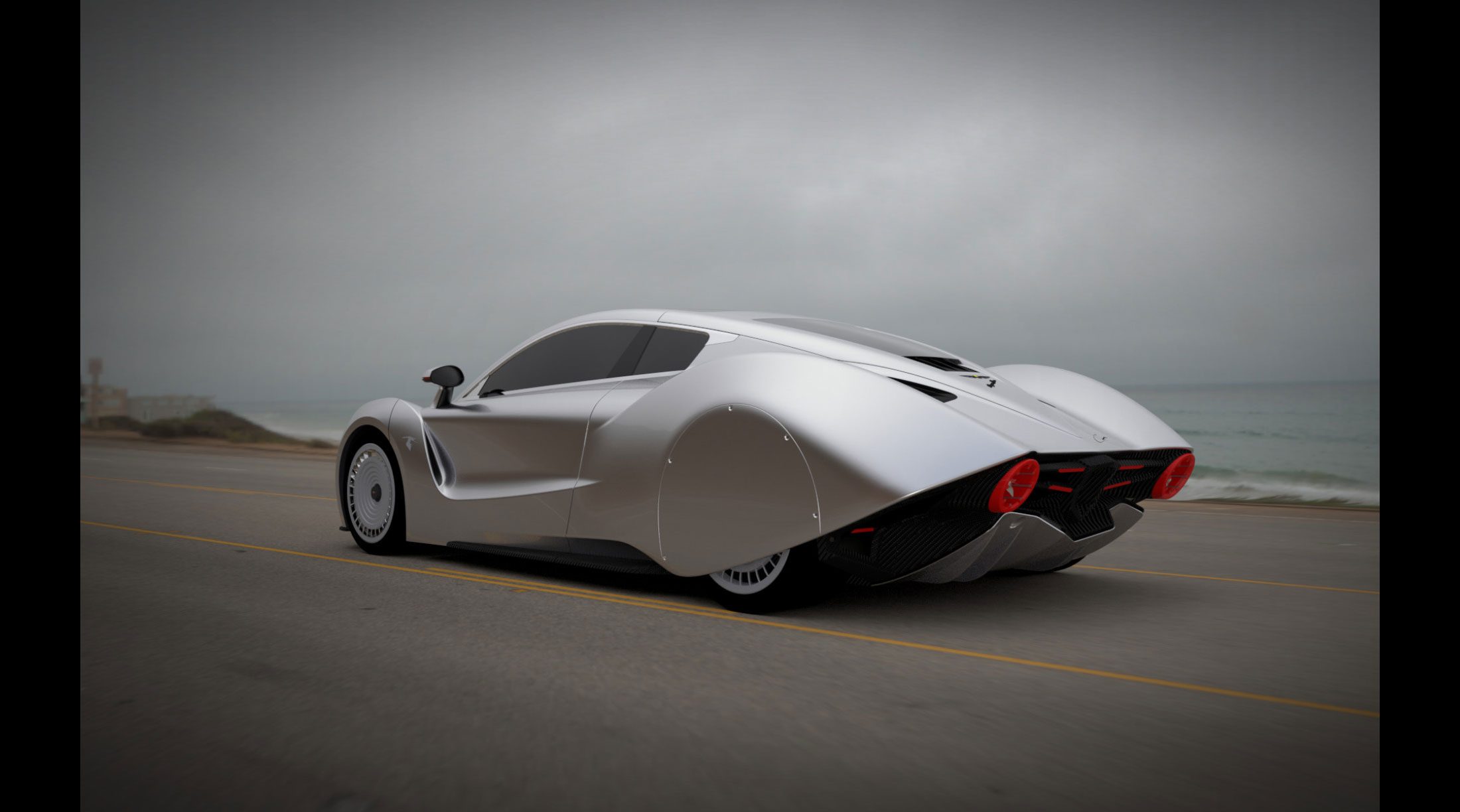
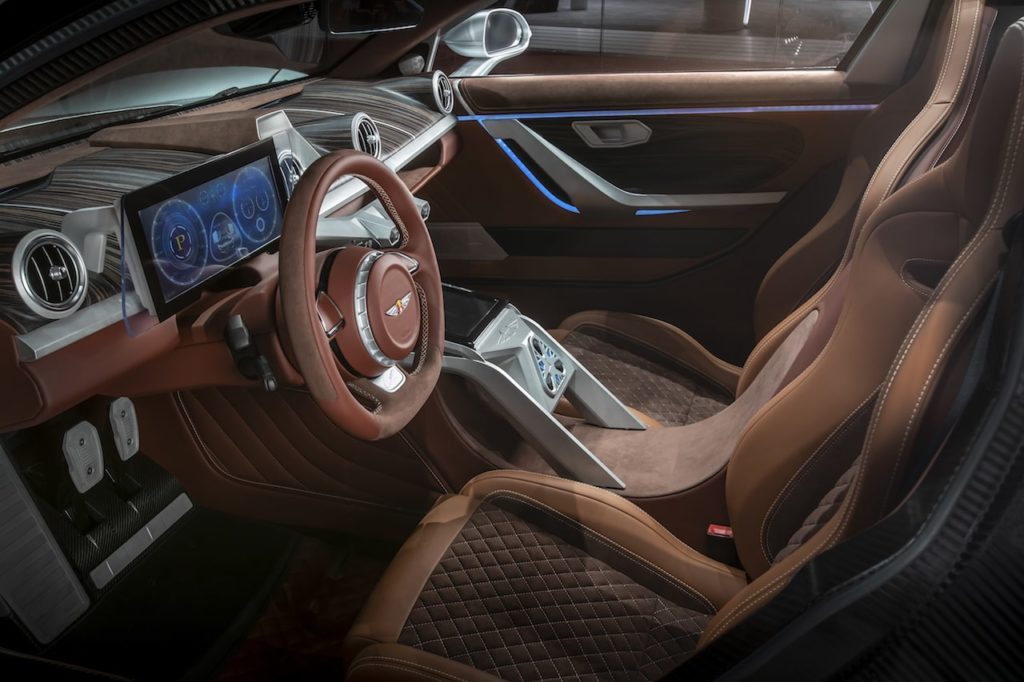
Links:
https://www.hispanosuizacars.com/carmen
https://d1qzc06liv1brx.cloudfront.net/media/press-release/HispanoSuizaCarmen-201902_en.pdf
OVERVIEW
• Manufacturer: Hispano Suiza
• Country: Spain
• Year: 2020
• Type: Street
• Division: Gr.X
ENGINE
• Engine: 2x rear 375 kW PMSM
• Power: 1006 HP / --- rpm
• Torque: --- Nm
• Engine location: Two rear electric motors
PERFORMANCE
• 0-100 km/h (0-62 mph) Time: <3.0 seconds
• Top Speed: 250 km/h (limited) (155 mph)
• Power-to-weight ratio: 0.60 hp/kg
DRIVETRAIN
• Chassis: Carbon fibre monocoque
• Drive: Rear wheel drive
BATTERY
• Battery: Lithium Ion
• Capacity: Base 80 kWh (upgradeable)
RANGE
• Range: ≥400 km
DIMENSIONS & WEIGHT
• Lenght: 4733 mm
• Width: 2040 mm
• Height: 1242 mm
• Wheelbase: 2800 mm
• Weight: 1690 kg


Links:
https://www.hispanosuizacars.com/carmen
https://d1qzc06liv1brx.cloudfront.net/media/press-release/HispanoSuizaCarmen-201902_en.pdf
Last edited:

